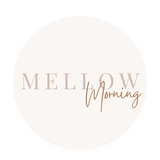by Sam Ayoub
The 10 Steps of a Korean Skincare Routine
The 10 Steps of a Korean Skincare Routine
You might have heard of a "10 step Korean skincare routine" before, but what is it exactly and what steps do you have to take? These are very understandable questions, especially if you are completely new to Korean skincare. Don't worry, we are here to help.
1. Oil based cleanser
Cleansing your skin with an oil based cleanser is the first step in your skincare routine, but also the first step when double cleansing. An oil based cleanser will remove your makeup and other oil based impurities, such as sunscreen and sebum.
2. Water based cleanser
After using an oil based cleanser, you follow up with a water based cleanser. A water based cleanser will cleanse, as the name suggests, the water based impurities, such as sweat. It also helps remove any residue from the oil based cleanser.
3. Exfoliator
Exfoliating your skin helps to remove dead skin cells to reveal smoother skin. Exfoliants can be physical or chemical. Physical exfoliants use something physical, such as sugar, while chemicals exfoliants use acids, such as lactic acid and glycolic acid.
4. Toner
Using a toner is essential in every skincare routine. It preps your skin for the following steps of your skincare routine, this is because a toner will balance the pH level in your skin and helps other products to sink deeper into the skin.
5. Essence
An essence provides hydration to the skin, resulting in a maximized ability of your skin to absorb the other skincare products you are going to apply.
6. Serum/Ampoule
Serums and ampoules are usually more concentrated in active ingredients than other products in your skincare routine. For this step it is important to really choose a serum or ampoule that caters for your specific skin concern. Think of a serum or ampoule intended to diminish acne scars or one specifically targeted towards diminishing the appearance of fine lines and wrinkles.
7. Sheet Mask
If you want an extra boost of hydration, sheet masking is the way to go. A sheet mask is packed with ingredients that are beneficial for the skin. The sheet will create a shield to avoid the hydration evaporating away. It traps the serum, in which the sheet mask is soaked, so it has to be absorbed by the skin.
8. Eye Cream
What can we say? The eye area also needs some love. The skin around your eyes is very delicate and thin and therefore it easily shows signs of dehydration and ageing. You can apply it either before or after moisturizer, whatever your preference is.
9. Moisturizer
Moisturizers help to prevent transepidermal water loss. This is basically a fancy way of saying that water evaporates from the skin's surface. Even though moisturizers are created to provide hydration to the skin, it is very important to be aware of the fact that many moisturizers contain "occlusives". Occlusives are those ingredients that create a film on your skin that prevents water from evaporating. This means it traps any moisture in from the products you have used prior to the moisturizer. So, a moisturizer basically seals in the moisture.
10. Sun Protection
Using sun protection should be a no brainer. You should always wear sunscreen, even if the sun is not visibly out or if you will only be spending a few minutes outside. The harmful UV rays are there, even if you don't see them. There are three types of sunscreens, mineral/physical sunscreens, chemical sunscreens, and hybrid sunscreens. Mineral/physical sunscreens sit on top of the skin and prevent the UV rays from absorbing into the skin, whereas chemical sunscreens are absorbed into the skin and convert UV rays into heat.


